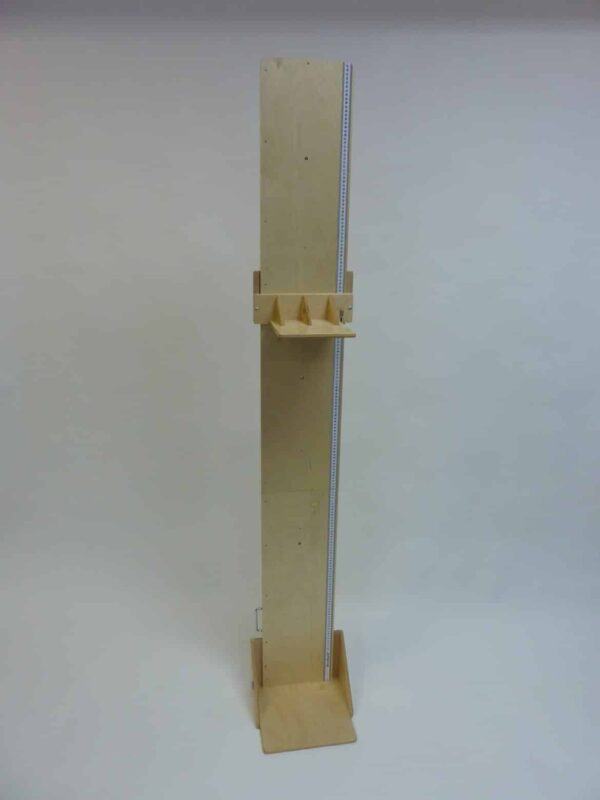HLMD – Height Length Measuring Device
Monitoring a patient’s general health requires getting an accurate assessment of their height or length. The discipline still faces difficulties in gathering accurate data for this type of analysis. We advise using a portable stadiometer and a measure mat to overcome this difficulty. These two devices are meant to be quickly put together, precise for use in the field, and stored together in one case. It is very challenging to use a single accurate HLMD (height length measuring instrument).
Only one solution, which is more difficult to transport than the two devices combined and is made of wood. UNICEF had determined that this particular type of product was necessary, and they had high standards for precision and portability. Devices that are appropriate for UNICEF’s needs could evolve and be used there in the future. The HLMD project expressed the need for the creation of new and/or better tools for measuring children’s and infants’ height and length. With the anticipated desire for procurement based on the field studies, they have informed developers and manufacturers of this need.
In order to assess prognosis and direct medical action for both chronic and acute diseases, anthropometric variables are used to quantify the physical characteristics of the human body (primarily size and shape). Anthropometric indicators are used by UNICEF to track the different symptoms of malnutrition in children and infants, such as stunting, wasting, and overweight.

Stunting is the term for linear growth retardation brought on by persistent or recurrent malnutrition, which frequently occurs at the same time as a child’s failure to develop mentally. As a consequence, children are measured as being too short for their age, and the conditions linked to stunting are frequently permanent.
Wasting, also known as acute malnutrition, is a disease in which children lose weight quickly or fail to gain weight, leaving them too thin for their height. Due to weakened immunity and long-term developmental delays, children with intermediate and extreme wasting are more likely to die, but treatment is an option.
Being overweight is being too heavy for one’s height as a result of consuming more calories than one is burning off through exercise. Children who are overweight later in life are more likely to develop noncommunicable illnesses like diabetes.
Anthropometric indicators are frequently used at the community level for comparative analysis and to track the success of nutritional programs. Therefore, it is crucial that statistics are reported accurately and are comparable across nations. Anthropometric indices frequently include three key measures of child growth in order to acquire population-level information on the aforementioned types of malnutrition.
Common anthropometric indicators of child growth
Height-for-age
Low height-for-age is used to identify stunted linear growth. This is reflective of suboptimal health and/or nutritional conditions, which at the population level tend to be associated with poor socioeconomic conditions.
Weight-for-height
Low weight-for-height is used to identify wasting or thinness in children associated with acute undernutrition. This may be the result of a recent rapid weight loss. Conversely, high weight-for-height is used at the population level as an indicator of overweight.
Weight-for-age
Low weight-for-age is a composite indicator, which comprises elements of stunting and wasting, but can be complicated to interpret in populations where overweight is seen along with stunting.
Although the number of children under age 5 suffering from stunting and wasting has steadily declined since the year 2000, progress is slow and the international community is far from being on track to achieve the World Health Assembly (decision-making body of the World Health Organization (WHO)) targets set for 2025, and the SDGs set for 2030. In 2017, an estimated 151 million children globally under age 5 were stunted, 38 million were overweight, and 51 million were wasted.